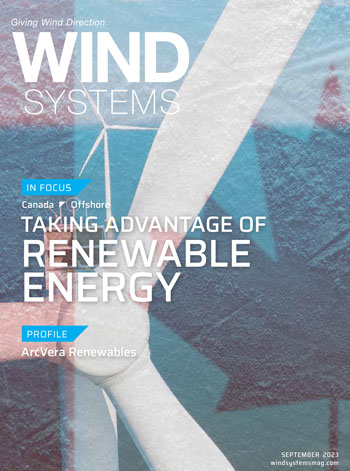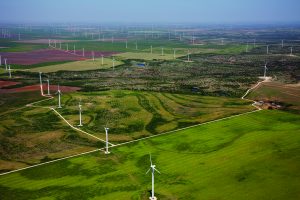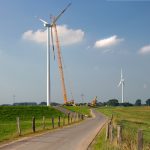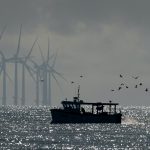Ahead of Electricity Transformation Canada, the country’s largest renewable energy and storage conference, Wind Systems sat down with the Canadian Renewable Energy Association’s President and CEO Vittoria Bellissimo to discuss the potential of renewable energy across Canada today. Canada continues to make major inroads into moving the country to a net-zero carbon future.
For proof, look no further than what Canada has accomplished in 2022, with 1.8 GW of wind and solar power added to the grid by the end of last year.
“For renewables in general, last year was a big success story,” Bellissimo said.
“The total growth in capacity was we got to 1.8 GW of new installed capacity in 2022, which is a significant increase from the previous year where it had been 1 GW. And an interesting part of that is that 98 percent of the growth was in Western Canada, with 75 percent of the growth in Alberta alone.”
That 98 percent in Western Canada included 1,391 MW in Alberta and 387 MW in Saskatchewan. In Eastern Canada, Quebec added 24 MW of total growth, while 10 MW was added in Ontario, and 2 MW in Nova Scotia.
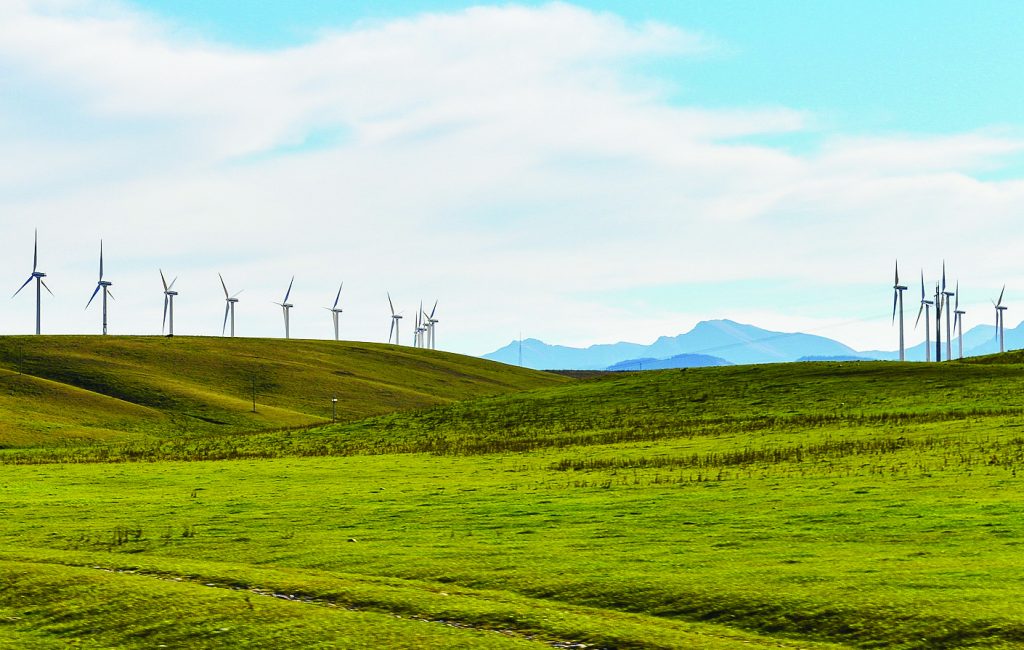
Different Jurisdictions
Canada has added an impressive amount of clean energy to its grid this year. However, that progress is not without its challenges, especially in certain jurisdictions, Bellissimo said.“Take Quebec for example,” she said. “Quebec is a legacy hydro system. They have a very clean electricity grid, but they recognize that there is going to be a lot of electrification, and they will need to add generation to their mix. They’re looking to add 100 TW/h of additional energy to their system, and they’re looking to buy wind, so they’ll be buying a gigawatt a year for 10 years. That’s a big undertaking, and CanREA is going to be there to support them in that challenge.”
Ontario is also facing growing energy demands, according to Bellissimo. “Ontario has been buying up capacity, but it is going to need more energy,” she said. “So, as we move forward into the fall and into the winter, we expect to see consultations on another large-scale RFP, but for energy instead of capacity.” In Manitoba, a nearly 100 percent clean hydro and wind jurisdiction, Bellissimo said the province is looking to meet the shift to electrification, and it is planning to buy renewables.
“Moving further west, Saskatchewan is doing two things: They’re buying renewables through an RFP process, and they’re also introducing a renewable access service, which will allow customers to buy their own,” she said. “It is a very unique situation from province to province and from territory to territory.”
Short of Goals
Canada’s wind and solar capacity grew almost twice as fast in 2022 compared to the year before, but it still isn’t meeting the growth rate expressed in CanREA’s report, “Powering Canada’s Journey to Net-Zero: CanREA’s 2050 Vision.” That report states Canada must deploy more than 5 GW of new wind and solar every year to meet net-zero GHG emissions by 2050. Despite those ambitious goals, the progress made to date is still a good sign Canada is taking climate change seriously, with more significant growth in wind and solar deployment expected.
In fact, CanREA’s data team is tracking more than 2 GW of projects under construction across Canada, plus another 6 GW of projects in advanced stages of development. That amounts to a total forecast of more than 5 GW of wind, 2 GW of major solar, and 1 GW of energy storage expected in the next few years. At the same time, CanREA is working with federal and provincial governments to unlock many more gigawatts of additional opportunities.
“We are working hard to make sure that wind, solar, and energy storage advance across the country,” Bellissimo said. “Each province has its own unique electricity policy. CanREA is working hard to ensure all provinces receive individualized treatment, while opening up access to the most affordable new resources.
“Electricity policy is largely under provincial jurisdiction, but the federal government also has a hand in it — for example, our national carbon policy,” she said.
“This is why CanREA has policy experts working with governments at the provincial and federal levels to drive change.”
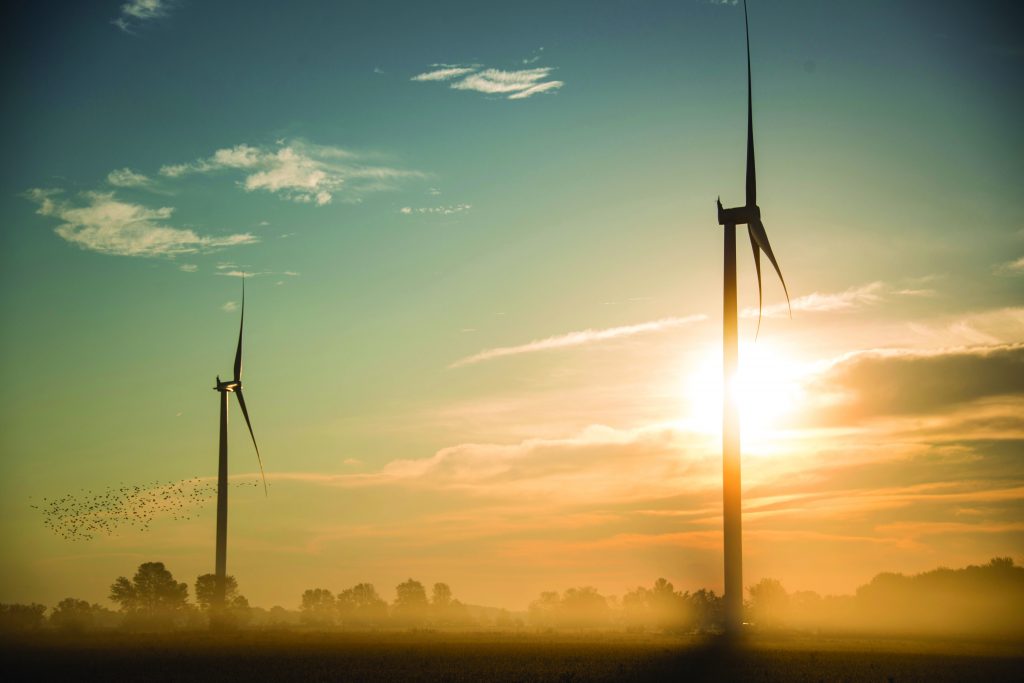
Draft Clean Energy Regulations
Bellissimo spoke at the launch of Canada’s draft Clean Energy Regulations, unveiled by Minister of Environment and Climate Change Steven Guilbeault on August 10 in Toronto.
“Canada has committed to a net-zero electricity grid in 2035,” she said. “There are some allowances in the draft regulations to run fossil generation in certain instances, and that includes small and remote communities with a small generation of less than 25 MW — those are instances where most of the generation is used on site.
“There are a few other instances, but, for the most part, the draft regulations are a signal to the market that we need to build a clean electricity grid, and we need to do that right now.”
Wind, solar, and energy storage are affordable solutions that can be rapidly deployed to meet clean-electricity goals, according to Bellissimo.
“Customers need to integrate as much as they can,” she said. “We’ve got these affordable, variable resources, and the grids should be looking to integrate them. CanREA understands concerns around growing electricity costs. We advocate for wind, solar, and energy storage because we share these concerns. In fact, the study that accompanied the draft Clean Energy Regulations shows the federal government believes we can get to a net-zero grid in a very affordable way.”
The draft Clean Energy Regulations were designed to achieve a net-zero electricity grid by 2035, in close collaboration with provinces, territories, Indigenous partners, industry, and others.
Pace and Scale Recognized
In its August study, the Canadian government recognized the pace and scale required to transform the country’s electricity sector, as well as the economic and job-creating opportunities that will accompany this shift.
Canada’s electricity grid is one of the cleanest in the world, according to the Honorable Steven Guilbeault, Minister of Environment and Climate Change, who announced the study. More than 84 percent of Canada’s electricity is generated from non-emitting sources, such as hydro, nuclear, wind, and solar. The draft regulations are designed to decarbonize the rest of the grid, while meeting the growing demand for power. If successful, more than 340 metric megatons of greenhouse gas pollution will be cut between 2024 and 2050, the federal government release said.
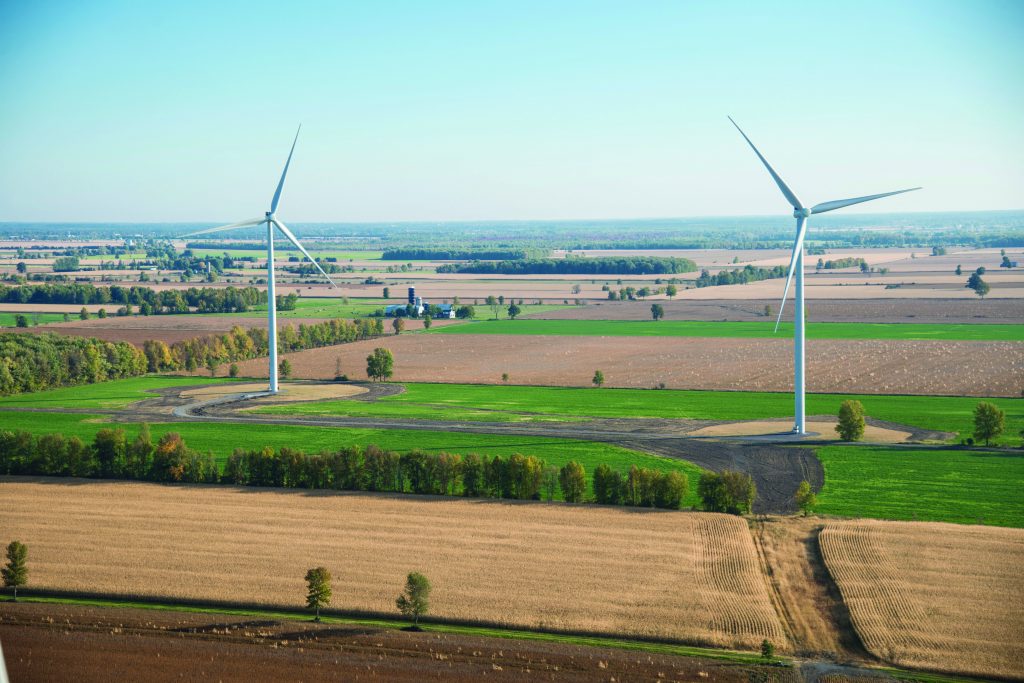
According to the study, new rules for cleaner power, similar to what the U.S. and G7 partners are doing, will stimulate investments in renewables, as well as in energy-storage systems and other new technologies, such as small modular reactors and carbon capture and storage. “Renewables really are the most affordable type of new generation,” Bellissimo said. “We now live in a world of abundant and affordable variable resources, and the new challenge is how to integrate more of them into our electricity systems.
Some of the things that we’re working on at CanREA include integrating energy storage into our systems. We represent wind, solar, and storage across the country, and the more energy storage we can get on the system, the more variable resources we can integrate.” Ontario is a great example of an energy storage success story, according to Bellissimo. “Ontario ran a large procurement for storage — the biggest energy storage procurement in North America; they’ve procured over 700 MW to date, and they’re looking to get to 2,500 MW,” she said. “I think other jurisdictions across the country can learn from their success.”
Other Benefits
Canada is seeing other benefits to renewable integration as well, according to the draft study. Earlier this year, Volkswagen committed to building one of the largest battery factories in the world in Southern Ontario, due to Canada’s ability to supply clean and affordable electricity. The plant is expected to create 3,000 direct jobs.
More than $40 billion in new tax credits and other major federal investments are expected to help drive economic opportunities through the construction of new power sources and retrofitting of existing plants, according to the study.
The Canadian government is working with provinces and territories to roll out this funding in a way that supports affordable clean electricity across the country. If provinces and territories take full advantage of these tools, federal funding is expected to offset more than half the cost of the new investments needed under the draft regulations.
The draft regulations also maintain the need for household affordability, with Canadians expected to save on energy costs when they switch from oil and gas to renewables.

As Canadians use more clean electricity, they are expected to spend about 12 percent less on energy by 2050, according to the study. The government is also helping households reduce their bills with home retrofit programs, zero-emission vehicle purchase incentives, and more. “As a pan-Canadian member association, CanREA is happy to see that these regulations are drafted in such a way as to set the destination, which is net-zero, but to let provinces and companies pick their path to get there,” Bellissimo said.
“The approach can be very different in different jurisdictions. “We are experiencing challenges in some provinces, such as Alberta’s unexpected moratorium on project approvals, announced in August. However, we’re seeing forward momentum in many jurisdictions. British Columbia is looking to buy renewables, so that’s a favorable environment for our members. Quebec, Manitoba, and even Ontario are looking to buy renewables. Nova Scotia is seeking renewables as well, and also has a Green Choice Program.”
Nova Scotia’s Green Choice Program is a variant of the corporate renewal PPA, according to Bellissimo, which allows large electricity customers to purchase clean electricity from new, renewable energy projects through an independent and competitive process.
“There’s a real interest all around the planet for customers, companies, individuals, everyone, to buy green energy directly,” she said. “I think some jurisdictions have recognized that this means they need to open up their system to enable it to happen, and Nova Scotia is on it. Saskatchewan is working toward it. Ontario is going to talk about it soon. Alberta has enabled it. I think it will grow.”
Beyond Canada
As Canada’s renewable infrastructure continues to grow, it is important to realize that the need for renewables doesn’t stop at the Canadian border. It is necessary that Canada works with its neighbor, the U.S., to tackle climate change on the global stage.
So, is Canada looking to collaborate with the U.S. in order to get more renewables on the grid?
“That’s a good question, and I think it’s a bigger question than just getting renewables on the grid,” Bellissimo said. “I think it’s more of a value-chain discussion. In April, I participated in a Canada-U.S. summit, and one of the big things that we talked about there was critical minerals, and how we can integrate the supply chains for critical minerals and take advantage of all the cross-border trade that we already do between Canada and the States. That’s a big area for collaboration. CanREA has been watching the States carefully with the introduction of the Inflation Reduction Act. We are hoping that Canada can play a larger role in integrated supply chains for all the critical minerals that we’ll need to develop our clean-energy future.”
Editor’s note
This year, Electricity Transformation Canada conference and exhibition is moving to Calgary, October 23-25, 2023. As the largest renewable energy and energy storage event in Canada, it is expected to attract key stakeholders looking to advance the global electricity transformation. Participants will include utilities, system operators, governments, end-use sectors undergoing electrification, and a variety of energy professionals. For more information, go to electricitytransformation.ca.
















